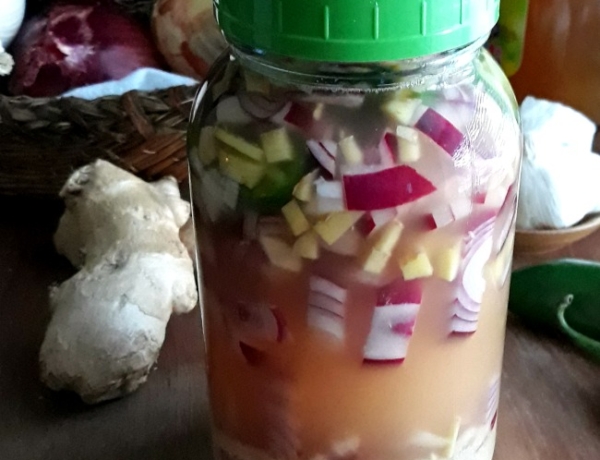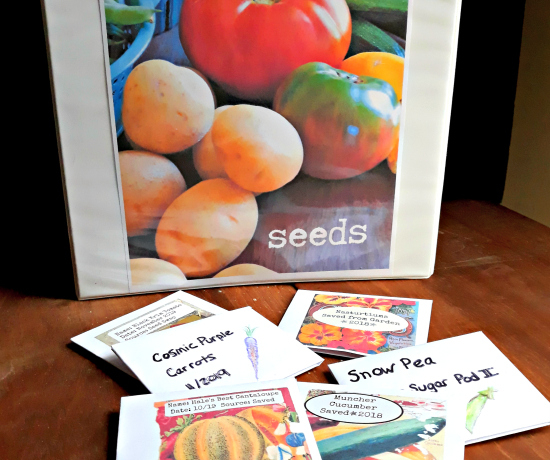Today, when it comes to the tasks of buying and preparing food and running our kitchens, we definitely enjoy a great many more conveniences than our grandmothers and great-grandmothers ever did. Things that we take for granted today, like 24-hour-a-day supermarkets, didn’t exist back in Grandma’s day. As a matter of fact, our grandmother’s grocery stores often closed early in the day and were not usually open on Sundays.
And year-round access to every imaginable fresh fruit and vegetable was also not a thing back in the day. In the winter, there were canned, fermented, and dried fruits and vegetables to eat, with maybe a citrus fruit in the Christmas stocking. And frozen premade meals? Not so much. What our grandparents called TV dinners first came into existence sometime in the 1950s, but I doubt that too many families relied on those as sustenance.
In addition to the conveniences of grocery shopping, we also have many more modern appliances to help us with food preparation. For example, many of us have electric refrigerators and freezers, which our grandmothers did not have. Some of us may even have had grandmothers who relied on an icebox rather than an electric refrigerator.

And yet, Grandma’s always managed because her knowledge of home economics was superior. Without having the options we have today, Grandma had to be self-reliant and depended on her skills and know-how. Skills like from-scratch cooking, shopping for food on a budget, keeping a pantry and root cellar, frugality, preparedness, and, in some cases, even growing food. And this knowledge, all but nearly forgotten, is still relevant. I mean, wouldn’t most of us like to save money, serve healthy meals, and sharpen our home cooking skills a bit?
To be clear, in sharing this list, I’m not trying to romanticize the past or shame us into doing things exactly the way Grandma did it. And I feel sure that my great-grandmother, the president of her local homemaker’s association in West Virginia, would have used a boxed cake mix now and again if they were available to her. And my grandma might have even traded in her stovetop pressure cooker for an Instant Pot. Grandma knew that life is hard work, and there should be no shame in making it all a little bit easier now and then.
So, in honor of all of our grandmothers (and our grandfathers, too, because one of mine happened to be a great cook), here’s my list of 25 tips, tricks, and bits of kitchen wisdom from Grandma’s kitchen:
1. Don’t Use Cold Eggs in Baking
To get the best results when baking, don’t use cold eggs. Allow your eggs to come to room temperature by sitting them on the counter for 30 minutes before using them. If your recipe calls for separated eggs, separate them first (the whites separate from the yolks more easily when cold), then allow the separated eggs to come to room temperature.
2. Keep Your Brown Sugar Soft
To keep your brown sugar soft, store it in an airtight container with a slice of bread. When the bread gets hard, remove it and replace it with a fresh slice.
3. Use Baking Soda in the Refrigerator
Keep the refrigerator smelling fresh by keeping a small plate of baking soda in the fridge to absorb odors. Change out for fresh baking soda every 2-3 months.
4. Buy the Cheap Cuts
Purchase inexpensive cuts of meat. Because while cheaper cuts of beef and pork may be tougher than the pricier cuts, they also tend to be more flavorful. If you have a freezer, increase your savings by stocking up on cheaper cuts of meat whenever they are on sale. These cuts are perfect for stews, soups, and meltingly-tender pot roasts, taco meat, and BBQ sandwiches. Look for cuts like top round, bottom round, and pork shoulder (also called Boston butt). Ribs, chicken drumsticks and chicken leg quarters also are often a real bargain. And as an added bonus, if you are interested in buying the best quality meats, going for the cheaper cuts can make organic and pasture-raised more affordable.
5. Save Your Bacon Grease
Use your bacon fat for flavorful sauteed or roasted vegetables. Or rub a little on a chicken before popping it into the oven. To keep your bacon fat from becoming rancid, you’ll need to strain out the solids before storing them. Do this by straining the liquid fat through a mesh strainer lined with a coffee filter into a glass or ceramic container (be very careful when the fat is still hot!). Then allow the grease to cool and store in the refrigerator for maximum longevity.
6. Stretch the Meat
Make your meat go further by adding in beans, lentils, vegetables, or whole grains. Mixing ground beef with chopped mushrooms makes a meaty-tasting burger but with less meat. Stuff peppers with a mixture of rice and vegetables with just a little meat mixed in for flavor. Roasting a whole chicken? Serve it for dinner the first night, make soup or chicken salad the next day, and then make chicken stock with the carcass.
7. Eat Simple Meals
Now not every meal needs to be simple, of course, but Grandma didn’t make fancy food an everyday occurrence. Oatmeal and fruit make a satisfying snack. Cottage cheese with peaches, while 1950s retro, is a healthy, frugal lunch. Make a big batch of soup with whatever odds and ends you have on hand, and have plenty of leftovers for easy meals. Or try beans and cornbread for a simple, filling dinner.
8. Don’t Throw Away Stale Bread
Use stale bread to make bread crumbs, croutons, or bread pudding. (But don’t save bread with mold. If you see mold on the bread – just toss it for safety’s sake!)
9. Learn to Make Gravy
Grandma knew how to make homemade gravy. Sawmill gravy, red-eye gravy, beef gravy, chicken gravy – they can all be made without a packet mix. At its most basic, gravy is just fat, flour (or other thickeners), and some liquid (like broth, drippings or milk). I find the ratio of 4 tablespoons of fat, to 4 tablespoons of flour, to 2 cups of liquid to be the perfect ratio for most gravies. Simply Recipes has a helpful guide to making gravy that you can find right here.
10. Eat the Leftovers
Save money and waste less food by eating those leftovers. Of course, you can just pop your leftovers into the fridge and eat them the next night, but you can also repurpose leftovers into a totally different meal. Meals like pot roast roasts and roast chicken are perfect to repurpose into tacos or chili. Turn leftover spaghetti into a casserole. Leftover chili can be topped with cornbread batter and baked into a pie. I also like to freeze leftovers into individual portions to have on hand for ready-made lunches. Avoid leftover burnout by getting creative!
11. Eat More Cabbage
Because Grandma knew the value of this frugal and versatile vegetable, it tends to show up in a lot of old-fashioned dishes. Coleslaw, sauerkraut, braised red cabbage, stuffed cabbage, cabbage soup. And it’s healthy, too. Did you know that cabbage is loaded with vitamins and antioxidants? Just ½ cup of cabbage provides a third of your recommended daily allowance of vitamin C!
12. Things that Grow Together Go Together
Grandma relied on her kitchen garden for much of her fresh produce and knew that fruits and vegetables that ripen around the same time taste best together – combinations like peppers with tomatoes, squash with corn, pumpkin with kale, and apples with pecans. Understanding this is key to creating recipes that are in tune with the seasons.
13. Know How to Make a Pie
Grandma knew how to make a pie, and probably made quite a lot of them. A pie is a frugal and easy way to get dinner or dessert on the table. A pie filled with seasonal fruit makes an amazing homemade dessert. Fill your pie with vegetables combined with chicken, beef or ham for a hearty pot pie (or leave out the meat and have a veggie pot pie). Whisk up some eggs, add some cheese and vegetables, and have a quiche for supper. And though Grandma probably used lard for her pies (which does make a fine crust!), an all-butter pie crust is delicious, too. Experiment and find what pie dough recipes you like best, and then make some extra dough to stash in the freezer to pull out when you want an easy meal.
14. Learn to Prepare Old-Fashioned Root Vegetables (Like Turnips, Parsnips, and Rutabagas)
Grandma didn’t limit herself to potatoes and carrots when it came to root vegetables. Roast them, boil them, or enjoy them in stews and soups. And rutabagas are delicious mashed and topped with butter, either on their own or as an addition to mashed potatoes.
15. Enjoy a spring tonic
After a long winter of living off of preserved fruits and vegetables, an infusion of nutrients from a spring tonic was just what the constitution and taste buds needed. Spring tonics are, generally speaking, soups, salads, and teas made from the new leaves and shoots of wild spring greens (and sometimes roots and barks from wild plants). And while Grandma knew how to forage for wild greens like dandelion, nettles, creasy greens, ramps, sassafras, and lambs’ quarters, you don’t need to forage your wild greens to enjoy a spring tonic (in fact, please don’t forage for anything unless you know what you are doing!). You can often buy dandelion greens at the farmer’s market. And most health food stores carry dried nettle that can be used in tea or soup. But any spring greens make a nutritious spring tonic, including Swiss chard, spinach, baby lettuces, pea shoots and greens, and watercress.
16. Grow Something
Whether it’s a planter of herbs on a windowsill, a pot of tomatoes on the back porch, or an abundant kitchen garden, growing something is good for the spirit and the wallet, and gives you a tangible connection to your food.
17. Get the Odor Out
Food storage containers can hang onto food odors – even the glass ones. To remedy this, soak smelly food storage containers in a mixture of hot water and a few teaspoons of dry ground mustard. After a few hours, wash the container with soap and water and the odor should be gone!
18. Check an Egg for Freshness
If an egg is of questionable freshness, place it in a bowl of water. If the egg lays on the bottom of the bowl on its side, it is fresh. If it stands upright, but still touching the bottom of the bowl, it is still good to eat but on it’s way out, so use it immediately. If the egg floats, it has gone bad and should be discarded.
19. Use Up Your Vegetable and Fruit Scraps
Vegetable peelings can be saved up in the freezer to make vegetable stock. Apple peelings are easy to turn into apple cider vinegar. And if nothing else, you can add your peelings to a kitchen compost pail.
20. Whenever possible, keep the pantry well-stocked
A well-stocked pantry saves money. Quick meals made from pantry ingredients can save you from buying expensive takeout. And buying when items are on sale, rather than just when you need them, saves tons of cash in the long run.
21. Use flour sack towels
They are all-purpose and work well as dish towels and for cleaning and cooking (I like to wrap my fresh bread in a flour sack towel.) And because flour sack towels are lint-free, they’ll leave your dishes sparkling when you dry them.
22. Have a Baking Day
Bake loaves of bread, cookies, rolls, and biscuits on a designated day. Do it weekly, or even monthly, then stash the extras in the freezer to pull out as you need them.
23. Use a Little Acid to Brighten a Dish
Sometimes when you feel like a recipe is missing a little something, a small hit of acid from vinegar or lemon or lime juice will do the trick. Roll lemons and limes under your palm on the countertop before squeezing them. This helps break down the fibers and allow maximum juice flow.
24. Make “Leftovers” On Purpose
If you’re using the oven or crockpot to make a roast, make a larger piece of meat to use throughout the week in other dishes. Leftover roast beef and be used to make sandwiches, tacos, breakfast hash, soup and more.
25. Learn to Can
It may or may not save you money, but it is a handy skill. And canning tomatoes from the garden and making apple butter from freshly-picked apples allows you to preserve the well-earned bounty of your harvest to enjoy during the rest of the year.
I hope you enjoyed this list! If you like this kind of old-fashioned wisdom, check out my List of 15-Old-Fashioned Garden Tips from our Grandparents. And if you have any kitchen tips or tricks you would like to share, please do so in the comments below!

*As an Amazon Associate I earn from qualifying purchases. This post may contain Amazon or other affiliate links, which means I will earn a commission at no additional cost to you if you click through and make a purchase.*





4 Comments
Miz Helen
March 3, 2020 at 3:02 amYour 25 Tips From Grandmas Kitchen is awesome, great tips! Thanks so much for sharing with us at Full Plate Thursday,473 and hope you are having a great week!
Miz Helen
Connie foltz
March 27, 2020 at 8:04 pmWonderful tips,I grew up with all these in my life,I still do all of these daily,but I do get to cook on a electric stove instead of a wood fired kitchen stove. Nothing says come in and set down like fresh cinnamon rolls baking or a pie in the oven,just have to make the coffee !
Melissa
March 28, 2020 at 4:48 pmI’m glad you enjoyed the tips! And a wood-fired kitchen stove sounds good, but nothing wrong with the convenience of an electric stove. But now you’ve gone and made me hungry for some pie and a cup of coffee! 🙂
Simple Ways to Save Money on Food - My Homemade Roots
April 22, 2023 at 6:10 pm[…] Are you looking for some simple ways to save money on food? If you’re like me, you’re experiencing the feeling of sticker shock when you go to the grocery store these days. It’s starting to seem a bit unreal. Every time I go shopping, I’m hoping to see food prices starting to come down, but instead, it seems like they just keep going up and up. And I fear that the reality is that the increases in grocery prices may be our new normal. And for more helpful, money-saving tips, check out 25 Tips from Grandma’s Kitchen. […]